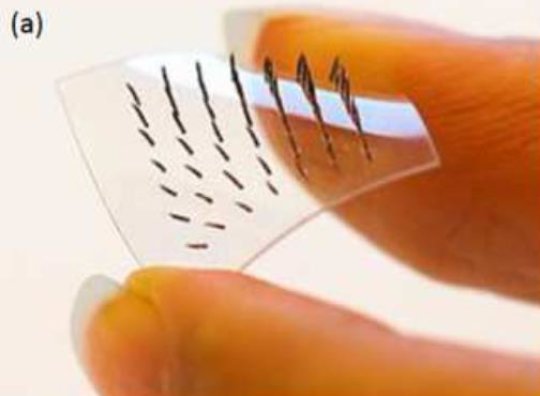It's only a matter of time before drugs are administered via patches with painless microneedles instead of unpleasant injections. But designers need to balance the need for flexible, comfortable-to-wear material with effective microneedle penetration of the skin. Swedish researchers say they may have cracked the problem.
In the recent volume of PLOS ONE, a research team from KTH Royal Institute of Technology in Stockholm reports a successful test of its microneedle patch, which combines stainless steel needles embedded in a soft polymer base - the first such combination believed to be scientifically studied. The soft material makes it comfortable to wear, while the stiff needles ensure reliable skin penetration.
Unlike epidermal patches, microneedles penetrate the upper layer of the skin, just enough to avoid touching the nerves. This enables delivery of drugs, extraction of physiological signals for fitness monitoring devices, extracting body fluids for real-time monitoring of glucose, pH level and other diagnostic markers, as well as skin treatments in cosmetics and bioelectric treatments.
Researcher actually tested two variations of their concept, one which was stretchable and slightly more flexible than the other. The more flexible patch, which has a base of molded thiol-ene-epoxy-based thermoset film, conformed well to deformations of the skin surface and each of the 50 needles penetrated the skin during a 30 minute test.
In addition to addressing people's reluctance to take painful shots, microneedles also offer a hygiene benefit. The World Health Organization estimates that about 1.3 million people die worldwide each year due to improper handling of needles.
